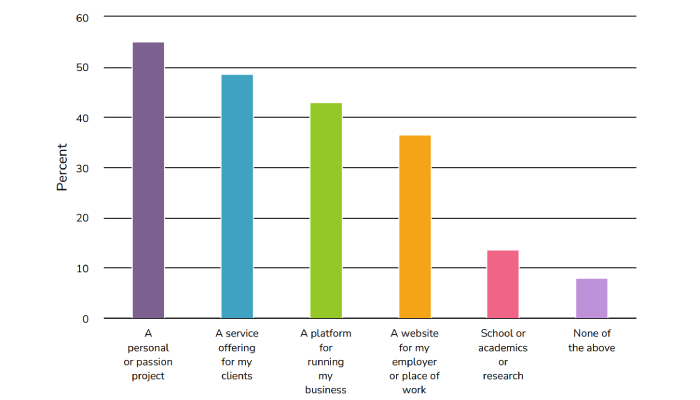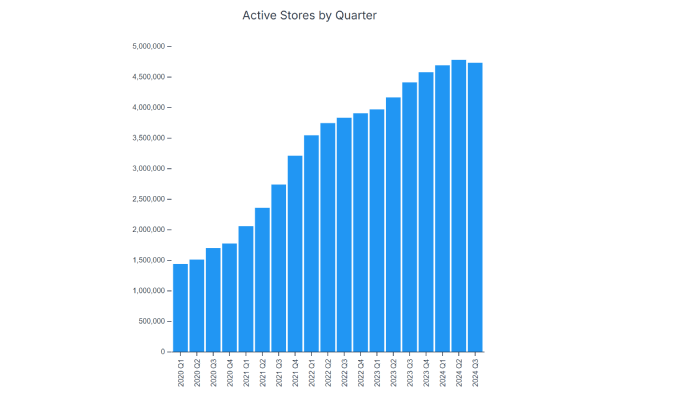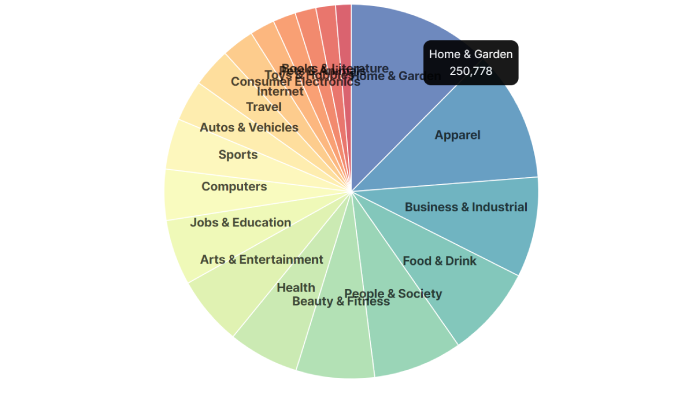WORDPRESS
20 Must-Know WordPress Stats Defining the Leading Platform in 2024

I’ve always enjoyed dabbling in illustration, and at one point, I had a WordPress blog to showcase my artwork. Back then, I didn’t really think much about how big of an impact WordPress had on the web— I was just focused on sharing my art. Recently, however, I started wondering just how many people actually use WordPress and what kind of influence it has across the internet.
Knowing these numbers can be pretty useful, not just for big businesses or marketers but for anyone who uses the platform. Whether you’re a creator like me or someone looking to build an online presence, understanding WordPress stats can help you stay ahead of trends and make better decisions.
So, let’s examine 20 WordPress stats that are shaping 2024.
WordPress Usage
1. Almost half of the world’s websites use WordPress
WordPress powers a massive 43.4% of all websites, making it the dominant platform in the web development space. It’s popular because it’s flexible, easy to use, and open-source, making it simple for both beginners and pros to build websites fast. Plus, its huge library of themes, plugins, and active community make it an excellent choice for all kinds of sites, from blogs to online stores.
2. WordPress rules the CMS market share
WordPress dominates the content management system (CMS) market with a huge 62.5% share. Its simple setup, wide range of features, and ability to adapt to sites of all sizes have solidified its position as the top choice for many users.

3. WordPress 6.6 is leading the Pack
WordPress 6.6 has been downloaded over 79 million times, making it the most used version to date. This is obviously due to its version’s improved features, performance boosts, and security updates, which encourage users to upgrade. Its widespread adoption also reflects how WordPress consistently meets user expectations with every new release.
4. WordPress powers a fourth of the top 10,000 websites
WordPress holds a solid 25.38% share among the top 10,000 websites worldwide. This indicates that even highly visited and complex sites trust WordPress. Its ability to handle heavy traffic and advanced features shows it’s not just for small blogs but also a favorite among major players.
5. Top languages in WordPress
English dominates WordPress with 71% of users, followed by Spanish at 4.7%, and Indonesian at 2.4%. This indicates that WordPress has a strong global presence but remains most popular in English-speaking regions. The platform’s multilingual support likely helps attract users from non-English-speaking countries.
6. Number of people who visit WordPress sites every month
Every month, over 409 million people land on WordPress sites. This highlights its widespread use and popularity across different types of websites worldwide.
7. Monthly page views on WordPress
With more than 20 billion page views each month, WordPress handles a massive amount of traffic. This shows how heavily the platform is relied upon for hosting and delivering content.
8. New posts created monthly on WordPress
WordPress users create around 70 million new posts each month. This highlights how actively people use the platform to share fresh content, from personal blogs to professional articles.
Every month, 77 million new comments are made on WordPress sites. This level of interaction shows strong community engagement and the platform’s ability to foster conversations between content creators and their audiences.
10. WordPress User Intent


According to a Q4 2023 WordPress survey, 55.1% of users use the platform for personal or passion projects, showing it remains a favorite for individual content creators. Meanwhile, 48.8% of users build sites as services for clients, demonstrating the platform’s popularity among freelancers and agencies. Another 43.1% use it to run their businesses, reflecting WordPress’s role as a strong business tool.
Interestingly, 36.7% use it for their employer or place of work, proving it’s also trusted in professional environments. Fewer users, around 13.7%, focus on school or academic purposes, and 8.1% of respondents said none of the above, which could indicate niche or alternative uses.
WordPress Commerce
11. WooCommerce dominates the ecommerce world
WooCommerce powers approximately 36.18% of active eCommerce stores based on the provided data. This is likely due to its seamless integration with WordPress, which is widely used for websites. Its customizable features and vast plugin library allow businesses to tailor their stores without heavy upfront costs. Additionally, it’s user-friendly for beginners yet powerful enough for larger businesses. This balance of affordability and scalability makes it a popular choice.
12. WooCommerce sees strong growth in 2024 Q2


WooCommerce saw a 46% year-over-year increase in active stores in Q2 2024. The surge suggests more businesses are choosing WooCommerce for its affordability and integration with WordPress.
13. Top product categories for WooCommerce stores in 2024


Home & Garden products are the most popular category for WooCommerce stores, with 5.3% of stores selling these items. Apparel follows closely at 4.8%, while Business & Industrial products account for 3.7%.
WordPress Plugins
14. WordPress’s plugin collection continues to grow
WordPress now has over 59,000 plugins that allow users to add features like SEO tools, security, and eCommerce functions. These plugins make it easy to customize websites without needing advanced coding skills.
15. Most popular WordPress plugins
In a 2023 survey, the most used WordPress plugin is Yoast SEO, with 23.3% usage, leading over the others. Close behind is the Classic Editor, with 18.4%, followed by WooCommerce at 17.3%, which is also highly popular.
Wordfence rounds out the top four with 15.6%, showing solid use among WordPress users. These plugins are favored for WordPress SEO, editing, e-commerce, and security, reflecting their importance in website management.
WordPress Themes
16. WordPress theme variety
WordPress offers over 12,000 free themes, providing users with a wide array of options for building and customizing their websites. In addition to this extensive collection, other marketplaces and platforms offer premium themes with advanced features and designs.
17. Top WordPress themes among the top 1 million websites
Hello Elementor continues to dominate with 14,452 websites, representing 1.45% of the top 1 million websites. Astra Theme follows with 10,904 websites, holding a 1.09% market share. Divi is close behind, powering 10,782 websites, securing a 1.08% share.
WordPress Security
18. Security vulnerabilities in WordPress
According to research by Sucuri, 60.04% of analyzed websites had at least one backdoor, while 52.6% contained some form of SEO spam. Notably, 95.62% of these compromised websites were running on WordPress, highlighting the platform’s large user base and potential security risks if not properly managed.
19. Malware targeting WordPress security plugins
Research published in 2023 by Snicco & WeWatchYourWebsite revealed that up to 14% of malware tampers with WordFence, the most popular WordPress security plugin. Hackers often exploit old or unsupported plugins to gain access to websites. These outdated plugins may contain unpatched vulnerabilities, making it easier for attackers to inject malicious code or bypass security measures.
20. Increase in abandoned WordPress plugins and themes
In 2023, the Patchstack team reported 827 abandoned plugins and themes to the WordPress team, a significant increase from the 147 reported in 2022. Of these, 58.16% were permanently removed from the plugin repository, emphasizing the growing issue of outdated and unsupported plugins on the platform.
Wrapping up
The latest WordPress statistics paint a vivid picture of why it continues to reign as the go-to platform for businesses and individuals worldwide. Its unparalleled reach, endless customization options, and vibrant community make it a top choice for creating everything from personal blogs to dynamic, high-traffic websites.
Yet, with such widespread popularity comes the inevitable downside—WordPress is also a frequent target for cyberattacks. Fortunately, the platform continuously evolves, offering robust security updates and a vast array of plugins to safeguard against threats.


















